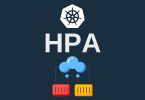In the following posts, I will provide a list of questions and answers related to business interviews for working with Kubernetes. These questions and answers are meant to serve as a starting point and provide a basic understanding of what to expect in a Kubernetes-focused business interview. I hope that this resource will be helpful for anyone preparing for a Kubernetes job..
What is Kubernetes?
Kubernetes is a container orchestration platform that can be used to manage containerized applications at scale.
It was originally developed by Google and is now maintained by the Cloud Native Computing Foundation.
Also it is often used in conjunction with Docker, but it can also be used with other container runtime engines.
Kubernetes provides a number of features that can be used to manage containerized applications, including:
- Deployment and scaling of applications
- Load balancing and service discovery
- Storage management
- Configuration management
- Rolling updates and rollbacks
- Health checking and monitoring
What are the benefits of using Kubernetes?
There are many benefits of using Kubernetes, including:
- improved application uptime and availability
- increased efficiency and utilization of resources
- better management of application deployments
- reduced operational complexity
- scale your applications on-demand
Kubernetes can help you achieve all of these benefits and more.
What are some of the key features of Kubernetes?
Some of the key features of Kubernetes include:
- container management
- service discovery and load balancing
- storage orchestration
- secrets and configuration management
- automatic rollouts and rollbacks
- self-healing
Kubernetes is also extensible, allowing users to add new functionality and integrate with other systems.
How can Kubernetes help you manage your containerized applications?
Kubernetes can help you manage your containerized applications by providing a platform for automating the deployment, scaling, and management of your containers. Kubernetes can also help you monitor the health of your containers and make sure that they are running as expected.
What is a Kubernetes pod?
A Kubernetes pod is a group of one or more containers that are deployed together on a single host. Pods are the basic unit of deployment in Kubernetes and are used to encapsulate an application’s containers, storage, and network resources. Pods can be deployed individually or as part of a larger application.
Kubernetes pods are managed by the Kubernetes control plane and are used to host applications. Each pod is assigned a unique IP address, and each container in a pod shares that IP address. Pods can be used to deploy applications, databases, and other services. Kubernetes pods are scalable and can be horizontally scaled to increase capacity.
Kubernetes pods are also highly available and can be replicated across multiple nodes. If a node fails, Kubernetes will automatically schedule pods on other nodes to ensure that the application is always available.
What is a Kubernetes deployment?
A Kubernetes deployment is a method of packaging and deploying applications on Kubernetes. Deployments can be used to create new applications or update existing ones. Deployments are typically used to manage stateless applications, such as web applications, that can be scaled horizontally.
Kubernetes deployments are usually managed by a deployment controller, which is a Kubernetes object that manages the lifecycle of a deployment. The deployment controller is responsible for creating and updating replicas of the application, and ensuring that the application is available and healthy.
What is a Kubernetes service?
A Kubernetes service is an abstraction that enables communication between pods. Services can be used to expose an application’s pods to other applications or to the outside world. Services can also be used to load balance traffic between multiple pods.
Kubernetes services are created and managed using the ‘kube-service’ command. To create a new service, you must specify the service name, the type of service, and the port to expose. For example, to create a new service named ‘my-service’ of type ‘LoadBalancer’, you would run the following command:
Kube-service create my-service –type=LoadBalancer –port=8080
This would create a new service named ‘my-service’ that exposes port 8080 and load balances traffic between the pods that are attached to it.
How can you use Kubernetes to scale your application?
Kubernetes can be used to scale your application by adding or removing pods as needed. You can also use Kubernetes to automate the scaling of your application by setting up scaling policies. Scaling policies can be used to scale your application based on CPU usage, memory usage, or custom metrics.
To add or remove pods, you can use the kubectl scale command. To set up scaling policies, you can use the kube-scaler command line tool. For more information on scaling your application with Kubernetes, see the Kubernetes documentation.
Kubernetes can also be used to manage the availability of your application. By setting up replication controllers, you can ensure that your application is always available even if individual pods fail. For more information on using Kubernetes to manage the availability of your application, see the Kubernetes documentation.
What are some of the challenges you may face when using Kubernetes?
Some of the challenges you may face when using Kubernetes include:
- managing storage for your containers
- networking your containers
- monitoring the health of your containers
- scaling your application
- Managing storage for your containers: In Kubernetes, pods are considered ephemeral and their storage is not persistent by default. This means that if a pod is rescheduled or terminated, any data stored in the pod will be lost. To overcome this issue, Kubernetes provides several storage solutions such as Persistent Volumes (PV) and Persistent Volume Claims (PVC) that can be used to provide persistent storage for pods.
- Networking: Kubernetes provides several networking solutions for connecting and communicating between pods. These include Services, which provide stable network identities for pods, and Ingress, which provide external access to the services running in a cluster. However, implementing and managing these solutions can be complex and require a good understanding of the Kubernetes networking model.
- Monitoring the health of your containers: As the number of containers and services in a cluster increases, it can be difficult to monitor and troubleshoot issues. Kubernetes provides several built-in solutions for monitoring and logging, such as Prometheus and Fluentd, but integrating and using these solutions can be challenging.
- Scaling your application: Scaling an application running on a Kubernetes cluster involves increasing or decreasing the number of replicas of a deployment or statefulset. Kubernetes provides several solutions for scaling, including manual scaling and automatic scaling using the Horizontal Pod Autoscaler (HPA) feature. However, scaling decisions and strategy depends on the nature of the application and the desired level of availability, and the specific requirements of the organization. Additionally, as the number of nodes and pods in a cluster increases, it can be challenging to ensure that the cluster can scale up and down as needed.
How do you handle scaling in a Kubernetes cluster?
Scaling in a Kubernetes cluster is the process of increasing or decreasing the number of replicas of a deployment or a statefulset.
There are several ways to handle scaling in a Kubernetes cluster, including:
- Manually scaling: You can manually scale a deployment or a statefulset by using the
kubectl scalecommand. For example, to scale a deployment named “my-deployment” to 5 replicas, you would use the commandkubectl scale deployment my-deployment --replicas=5 - Automatically scaling: Kubernetes provides a built-in feature called Horizontal Pod Autoscaler (HPA) that can automatically scale the number of replicas based on the resource usage of the pods. The HPA will create or delete replicas as needed to maintain the desired average CPU utilization or memory usage across all replicas.
- Custom Autoscaling: Some organizations, have specific requirements for autoscaling and opt to use custom metrics and external systems to scale their kubernetes clusters.
- Scaling by using Kubernetes Operators. Kubernetes operators are a way to package, deploy, and manage a Kubernetes application. They can help automate tasks such as scaling, backups, and updates.
It is important to note that, Scaling decisions and strategy depends on the nature of the application and the desired level of availability, and the specific requirements of the organization.









